Top>Education>What is Culture? Learning as a Hands-on Experience: The Promotion of Regional Culture
 Index
Index
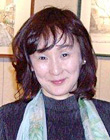
Emiko Kuroda [Profile]
What is Culture? Learning as a Hands-on Experience: The Promotion of Regional Culture
Emiko Kuroda
Professor of Aesthetics (Culture / Drama), Faculty of Policy Studies, Chuo University
1. First, Watch
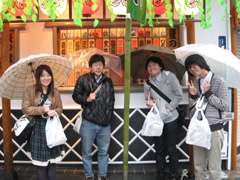
I run a Faculty Linkage Program entitled the regional public management program which started in 2008, and finally this year seminar students of all grades are participating in it.
Because my specialization is drama, I teach particularly culture promotion in the area of regional public management, introducing practical training. Even if we call it cultural promotion, however, the students are still in their twenties, have little theater-going experience, and have at most watched rakugo performances and kabuki plays in their high school art appreciation classes. The idea of suddenly sending such students out to investigate the status of regional cultural programs and making them propose improvement measures is absurd. Therefore, they must first be made to watch.
The act of theater-going tends to be thought of as sitting in a theater chair and watching idly from curtain rise to curtain fall. It must, however, also resonate out into activities such as considering what to watch, when to watch, from which seat to watch, by which means of transportation to get there, and finishing with activities such as sharing thoughts with friends and having dinner.
The students must first be made to experience theater-going as this kind of connected event. Through this experience, the students notice many things such as which posters catch the eye, which flyers have an easy to read commentary on the plot, how to get to the theater, if it is possible to have a light meal near the theater, or how comfortable the lobby of the theater is. All of these small observations prove to be surprisingly useful when later performing practical training in regional cultural promotion.
2. Then Try It
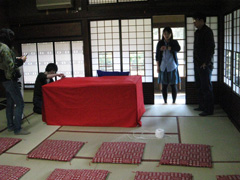
I majored in modern English theater and have been involved in performances as a translator of plays since my days as a student, and I know that it takes many days and tremendous effort to go from planning a single play to performing it. Of course, it goes without saying that cost is also involved. Accordingly, it is not possible to have students produce a play, so I thought of having them produce a rakugo performance. This is an idea that originally came from my own experience.
I became dissatisfied with only doing the play translations I had been involved in for many years and began to write and perform plays by myself, but as mentioned earlier, putting on a single play involves tremendous effort, manpower, and expense. It was in this situation that I happened to come in contact with rakugo, and I started to be asked to write new rakugo stories. Differing from plays, rakugo performances are usually done in musical halls, and as long as a rakugo storyteller will memorize and perform the new rakugo story, a performance can be put on.
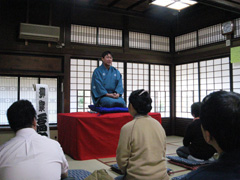
Based on this, I started to plan and hold rakugo performances as the one-year learning goal of the initial group of seminar students. The location chosen for the performance was an old house in Kawagoe, the hometown of two of the seminar students. Because this location belonged to the city, we had to submit a plan to the board of education in order to use it, and it took time for permission to be granted. After permission had finally been granted and we were at the point of making and distributing flyers for the performance at stations, we then found out that such advertising activities required permission from the police. At the same time, meetings with the rakugo storyteller who will perform are also important. What is needed to make the stage? What kind of story should be told? There were mountains of things to prepare and consider, and to the seminar students, it was a series of trial, error, and hardship.
3. Second Challenge
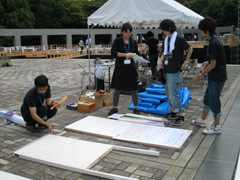
The second challenge was a rakugo production experience with a few patrons, half of them acquaintances, but it seemed to inspire great confidence in the students. In the following year, 2009, when meeting the second group of seminar students and working on a new plan, the initial group of seminar students transformed into reliable upper classmen.
The second year plan that was attempted was the Tama Center Festivity Creation Project (Tama Sentā Nigiwai Sōshutsu Jigyō) which was found in a newspaper advertisement. The advertisement was looking for a group to revitalize the region by doing something on a Noh stage specially setup on the Kirameki no Ike (reflecting pond) at Parthenon Tama after a professional Noh performance. The seminar submitted a plan that proposed a music festival put on by students and local residents, and this was accepted and began moving towards reality. There was, however, a large miscalculation. The easy-going idea that the seminar would recruit a few performance groups to participate and leave the rest to them turned out to be a big mistake. It was discovered that the planner, our seminar, would have to supply the equipment. Because we had no budget to speak of, we had no choice but to collect the necessary expenses from the participating groups. We had to bring together people we had never met, explain the concept behind the music festival, and talk to them about the sharing of expenses. We somehow held out and persuaded them even after being quickly rejected by emails saying, “if it costs money, we're not participating.” We found businesses on the internet and called them to negotiate low prices on equipment we had never seen before. We rented a car to transport the equipment and found a person who could drive. The seminar students, particularly the second group of students, sacrificed their summer vacation to further the preparations.
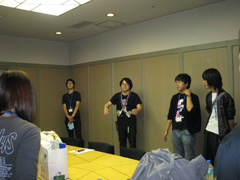
In contrast to the Kawagoe rakugo performance, this time there was an outdoor stage that could seat more than five hundred. The decision on what to do in the case of rain was also important. The initial group of seminar students was there to support the second group of students from behind when they were about to fall into a panic and freeze.
The students wrote out the work required up until the day of the event in detail and created a minute by minute table of staff assignments during the event. Because if only the students in my seminar participated, there would not be enough staff, they brought together other volunteer staff members by each of them asking a few friends to participate.
4. Moving People
The relationship with this volunteer staff also became a large lesson for the seminar students. In order to get people who have come together out of benevolence and aren't even receiving a stipend to cover transportation to move smoothly and happily during the event, the seminar students, who were running the event, had to have a firm grasp of the workflow and had to convey that workflow in words. Additionally, the students had to make ad-hoc assessments of the various unexpected events that occurred during the event and had to convey changes in the program to the staff. Furthermore, the seminar students also learned the lesson that the most important aspect of getting people to move for you is that you have to be the one who moves the most.
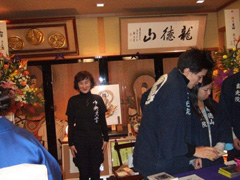
Well, my writing has focused primarily on the practical training experiences of students, but my actions as the leader of these activities have also been truly difficult and involved many troubles. Because I had been involved for many years in the public performance of plays and recitals, I just wanted to get involved myself. While it may be a very simple task to me, however, if I were to do it, the students would not be able to learn from it. The largest challenge given to me was waiting patiently while the students went through trial and error, suffering, and finally finding an answer.
5. Verification and Establishment
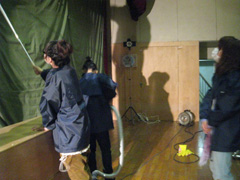
In recent years, the number of researchers who discuss theater in connection with other fields such as cultural anthropology or legal studies has grown. I previously mentioned that there is a perception of taking the act of theater-going as something which is not just the time spent sitting in a chair, and that line of thinking is at the foundation of recent theater studies with most researchers referencing it.
When I have the seminar students who have completed the production experience read those articles written in English, responses that display deep understanding can be seen in the students, such as “that's right” or “they're talking about that here,” because they can understand the articles in light of their own experiences.
Most recently, we assisted in the production of a rakugo performance at the behest of a local middle school, and here we also faced unexpected events. Specifically, the gymnasium which was to be the location of the performance was extremely dirty and required extensive cleaning before the stage and platform could be built. Accordingly, there was an all out mobilization of personnel from new sophomores who just joined the seminar to seniors in the midst of job hunting, and of course me as well. Covered in dust, we all cleaned as much as possible within the limited time available.
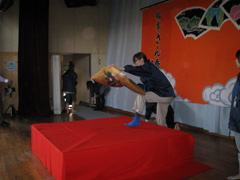
In a class after this cleaning experience, we discussed “why we worked so hard to clean that place.” During the discussion, there was a student who noticed there might be a connection with the ideas of the ordinary(ke), extraordinary(ha-re) we had read about in a book on classical theater. Theater and entertainment must take place in an extraordinary space. Consequently, a performer cannot be welcomed into the dust and garbage produced by ordinary living. The students knew these things not in their minds but in their hearts through their limited meetings with performers and theater-going experience.
The appearance of a master's kimonos neatly arranged atop Japanese paper by his disciple while visiting the dressing rooms of the Suzuki Entertainment Hall, the careful handling of gold leaf covered screens while assisting with a rakugo performance at a temple, learning how to install shoji from a temple steward after a performance, and other such experiences may have sunk into the hearts of the students as a valuable lesson that cannot be learned in the classroom.
What I keep telling my students is two opposing things, “first take action” and “if you don't like it, you don't have to do it.” The reason I do this is because I think these two things are the foundation of cultural promotion projects. Therefore, I am always hoping the students will think to themselves “I should do this” and take action even while I am telling them “you don't have to do it.”
The efforts of last year's students have born fruit with a request from Parthenon Tama to participate this year in the position of a Reflecting Pond Outdoor Stage Planner, and currently the activities of the third year of the seminar are underway.
- Emiko Kuroda
Professor of Aesthetics (Culture / Drama), Faculty of Policy Studies, Chuo University - Born in Tokyo, Japan. She received a master's degree in English literature from the Graduate School of Tokyo Woman's Christian University and completed her doctoral program without obtaining a degree in American Theater at Aoyama Gakuin University. She has translated the scripts of many plays including Arsenic and Old Lace by Joseph Kesselring, Master Class by Terrence McNally, the musical Sweet Charity by Neil Simon, and The Beautiful Game by Ben Elton. She has created plays including Shiroi Karasu (White Crow) and Tenshi no Niwa (Angel's Garden) as well as new rakugo stories such as Hoshigaki (Dried Persimmon) and Kowairoya. She is also editor of the magazine Amerika Engeki (American Drama) (Hosei University Press).
- Research Activities as a Member of Research Fellowship for Young Scientists (DC1), Japan Society for the Promotion of Science (JSPS) Shuma Tsurumi
- Important Factors for Innovation in Payment Services Nobuhiko Sugiura
- Beyond the Concepts of Fellow Citizens and Foreigners— To Achieve SDGs Goal 10 “Reduce Inequality Within and Among Countries” Rika Lee
- Diary of Struggles in Cambodia Fumie Fukuoka
- How Can We Measure Learning Ability?
—Analysis of a Competency Self-Assessment Questionnaire— Yu Saito / Yoko Neha - The Making of the Movie Kirakira Megane








